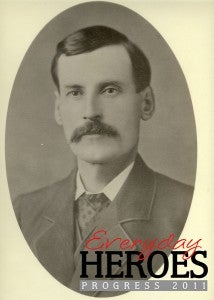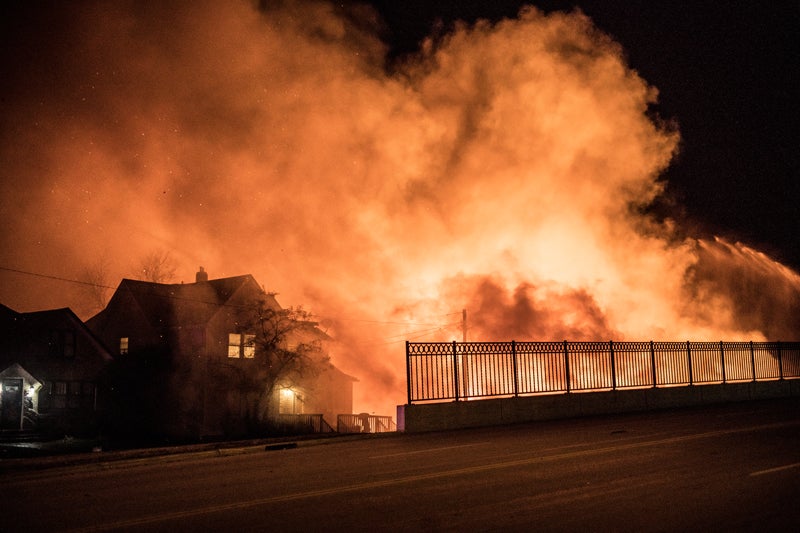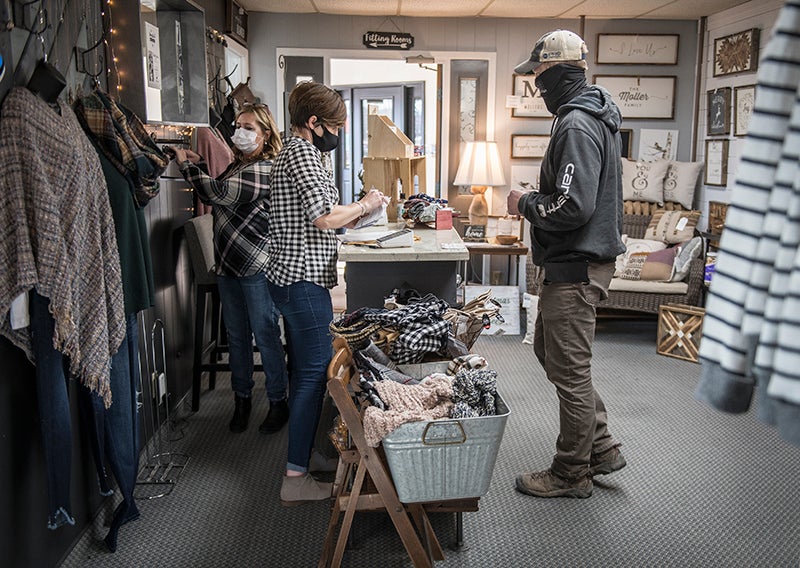Albert Lea’s teenage war hero
Published 5:00 pm Monday, March 21, 2011
Where did the name for Albert Lea’s Blackmer Avenue and nearby Blackmer Bridge originate? The easy answer to this question is based on a pioneer doctor named Blackmer.

Dr. Frank Blackmer (1847-1900) was seriously wounded during the battle at Fort Ridgely, north of New Ulm, during the Sioux Uprising on Aug. 22, 1862. In later years he was a local medical practitioner. There is speculation that this photo was retouched to cover up the scar from his facial wound. -- Photo courtesy Freeborn County Historical Museum
However, there were two pioneer doctors, a father and son, with this name who practiced medicine in Freeborn County. And it’s likely the local street was named in honor of the son who may have been one of the youngest volunteer soldiers in Minnesota history to ever be wounded in military action.
Dr. Franklin Blackmer is considered to be one of the real pioneers of Freeborn County. He moved from Ohio with his family to a farm near Pickerel Lake in 1856, and then to a another farm on the west side of Albert Lea the following year. For some now unknown reason, he didn’t practice medicine in this area until Dr. Albert Clark Wedge, the county’s first physician, enlisted in a volunteer regiment during the Civil War. He took care of Dr. Wedge’s practice for several years and reportedly resumed farming after the war was over. The first Dr. Blackmer died on Feb. 2, 1877.
His son, Frank, was born in Amhurst, Ohio, on Jan. 16, 1847, and attended a few years of school in both Ohio and Albert Lea. At the age of 12, the youngster decided to quit being a farmhand and to try some other kind of work. He soon became a typesetter for the Southern Minnesota Star and later worked for a newspaper in Itasca, several miles northwest of Albert Lea. The newspaper in Itasca soon went out of business, so Blackmer and a friend named Isaac Botsford took the printing press is lieu of wages. They moved this equipment west to Blue Earth City and started the Blue Earth Post.
In early 1862 the nation was involved in a civil war, and Minnesota had its own problems with a threatened Indian uprising. Blackmer enlisted in the 5th Minnesota Regiment just after his 15th birthday and soon became the orderly sergeant for Company C. This unit was stationed at the first Fort Ripley near Brainerd, then sent to do garrison duty at Fort Ridgely, north of New Ulm, in the summer of 1862.
On Aug. 22, 1862, Mdewakanton Sioux warriors attacked Fort Ridgely and during the intense fighting Sgt. Blackmer received a severe gunshot wound in the face, jaw and tongue. He was hospitalized for several months and given a medical discharge.
The wound sustained by Blackmer gave him a somewhat disfiguring facial scar, a speech impediment, and caused almost constant pain and discomfort for the rest of his life.
By his 16th birthday, Blackmer was working for a newspaper in Chicago. Later in 1863, he decided to become a doctor and enrolled as a student at Ohio’s Oberlin College. Blackmer worked part-time at a newspaper, sawed wood and did other jobs to pay for his tuition and board.
After several years at Oberlin, Blackmer attended the Cleveland Medical College and graduated just after his 21st birthday. He served a short internship in an Ohio hospital and returned to Albert Lea to enter into a medical partnership with Dr. Wedge.
The second Dr. Blackmer practiced medicine in Albert Lea for about 32 years. In 1872, he married a relative of Dr. Wedge’s, and they had a son and a daughter.
Dr. Frank Blackmer died on July 11, 1900. On the day of his funeral, every business firm in Albert Lea closed for several hours to honor the memory of a local leader, a popular medical practitioner, and long-suffering Sioux Uprising veteran who certainly earned the status of hero.





